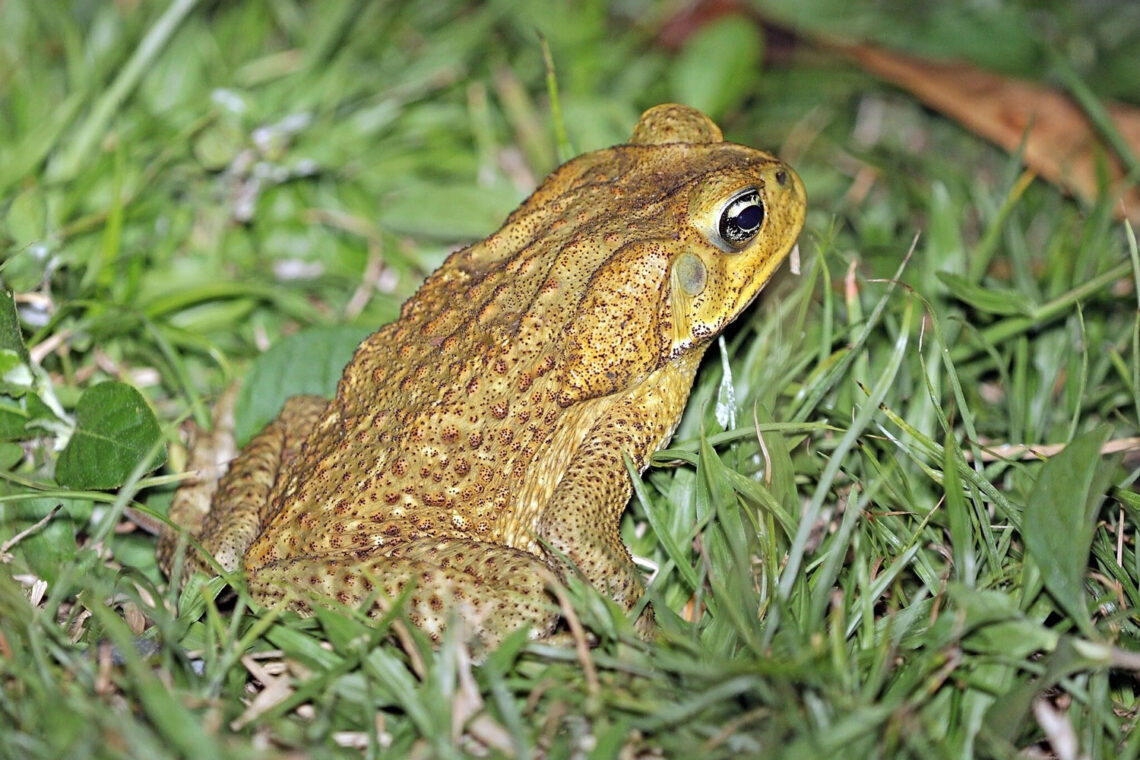
Cane Toad
Rhinella marina
Species Info General
Other common names: Bufo toad
The cane, also known as the bufo toad, is a large, warty, brown terrestrial toad native to Central and South America. In Hawaii, they’re often seen hopping across dewy lawns or golf courses at night—and they may even turn up in your pet’s food bowl. Sugar growers introduced cane toads to the islands in the 1930s to counter beetles in the sugar fields. Unfortunately, the toads did not effectively control the beetles and instead became an invasive species.


Identification/Description
The cane toad is a large amphibian with dry, bumpy skin that ranges in color from grayish-brown to tan or olive, often mottled with darker spots. It is the largest species in its family, weighing up to four pounds and growing up to six inches long. Cane toads have broad, flat heads with ridges above their eyes and large parotoid glands behind their ears. These glands secrete toxic fluid that is dangerous to all species.
Cane toads have a distinct call, often compared to a distant tractor or car engine. It sounds like a low, mechanical “brrrr” that lasts several seconds. It is typically heard at night when cane toads are most active.
Impacts
- The Global Invasive Species Database recognizes cane toads as one of the world’s top 100 worst invasive species. Cane toads can reproduce exponentially. They breed year-round in warm climates like Hawaii and can lay 5,000 to 32,000 eggs at a time. While cane toads require still or slow-moving bodies of water to lay their eggs, they can adapt to different temperatures and water environments, allowing them to reproduce in various environments.
- Cane toads are opportunistic omnivores. In Hawaii, they primarily prey on insects and may have contributed to the decline of some native insect species, like the Hawaiian cricket. They also pose a serious threat to pets in Hawaii due to their toxic skin, which can cause severe poisoning in dogs if they lick, bite, or ingest a toad. Cane toads sometimes turn up in pet food bowls, as they’ve been known to eat dog or cat food that has been left outside.
History
The Hawaii Sugar Planters Association (HSPA) intentionally introduced 150 cane toads to Oahu in 1932. They hoped the toads would reduce beetle populations in the sugar fields. HSPA bred the toads and distributed 100,000 of their offspring across the Hawaiian Islands. Unfortunately, cane toads did not effectively control the beetle population. Today, they are a widespread invasive species.
